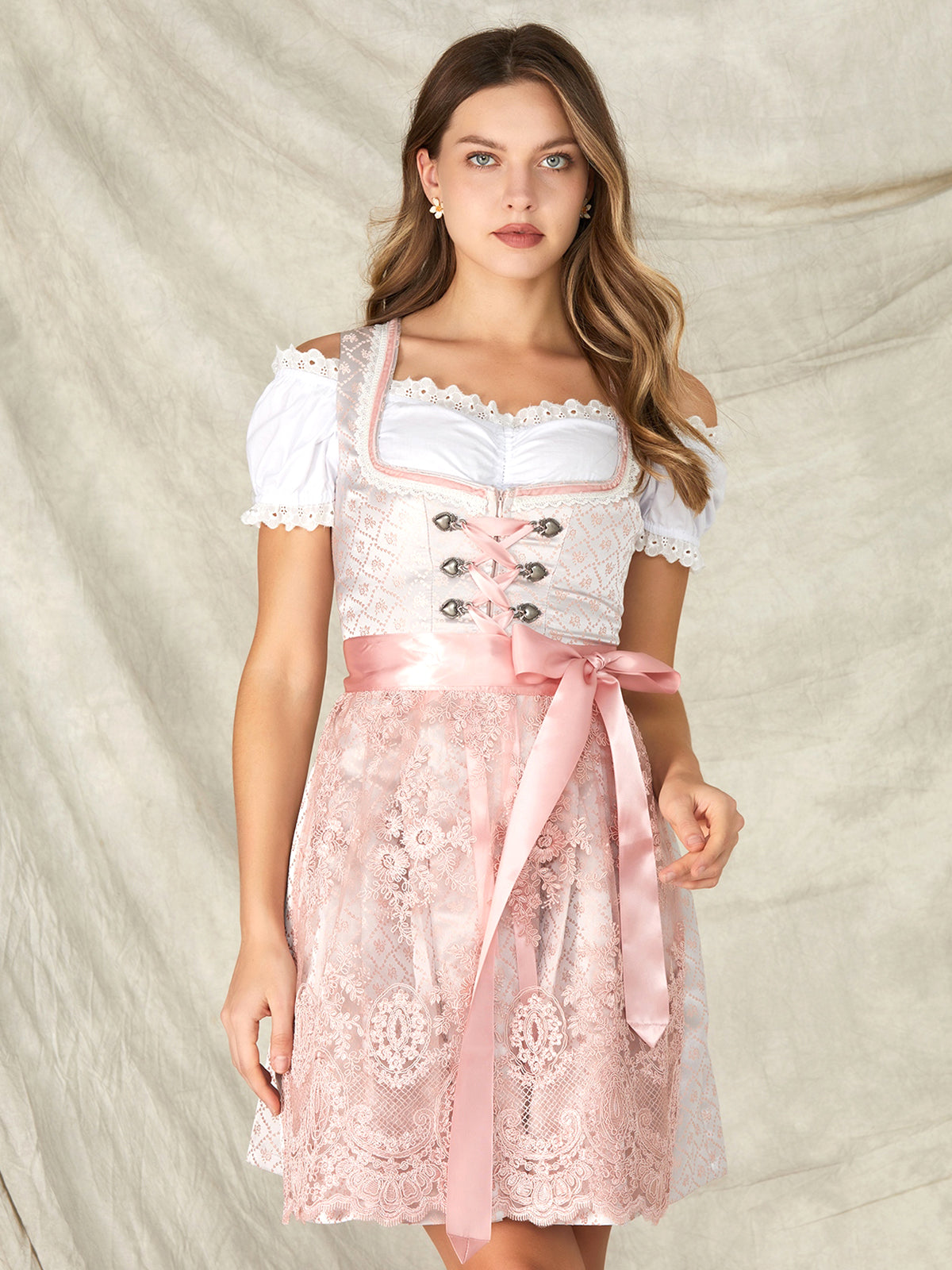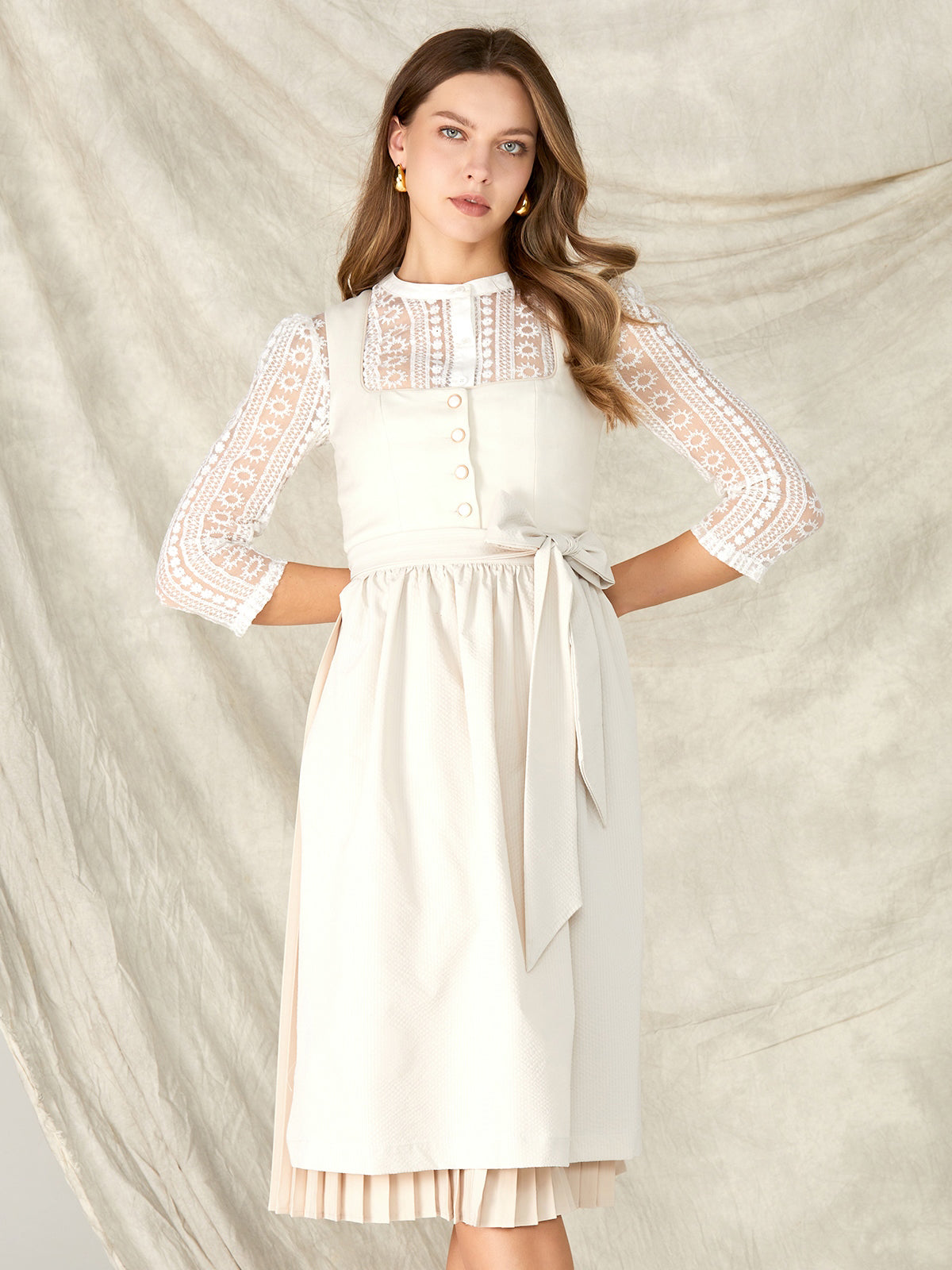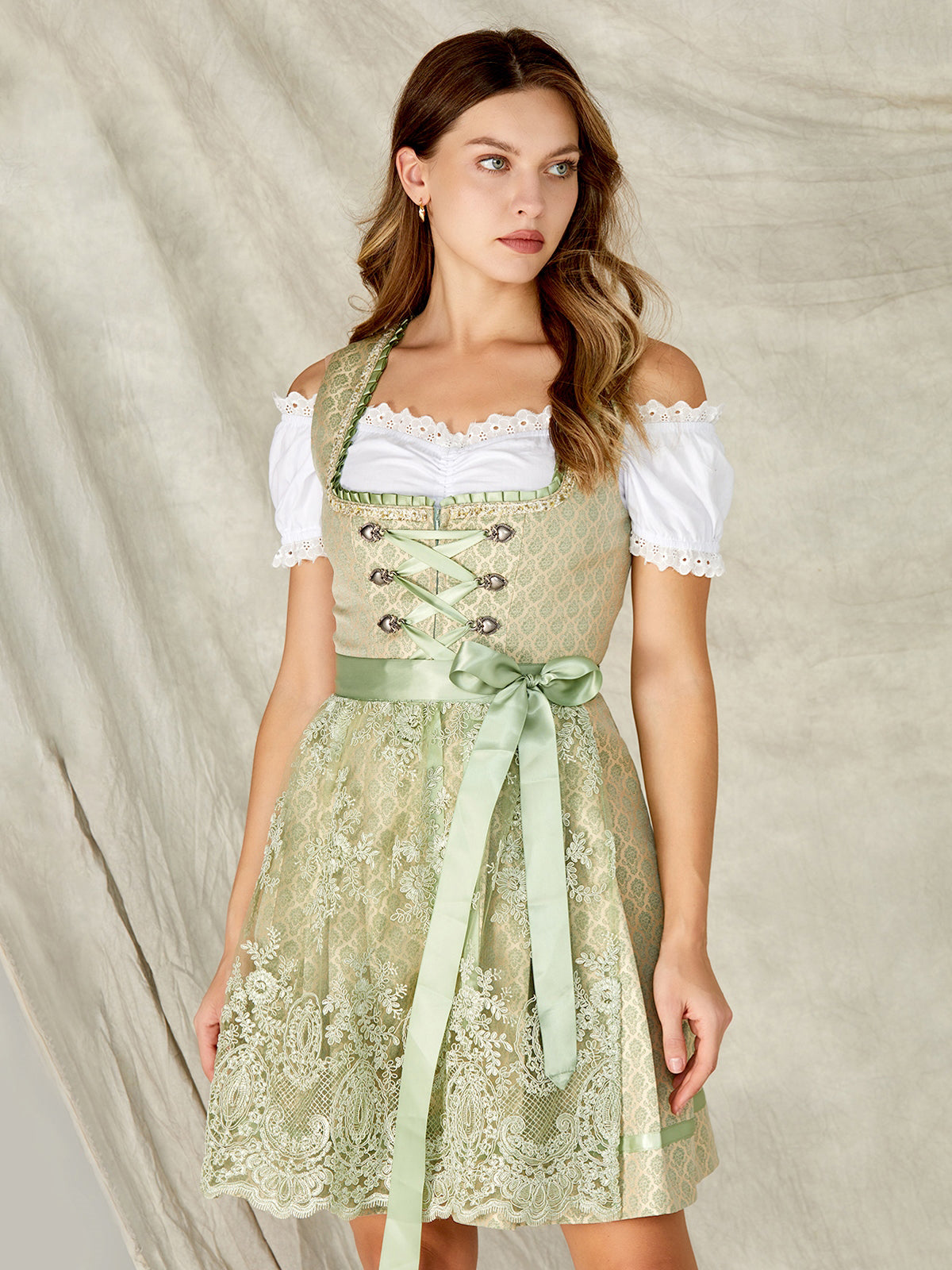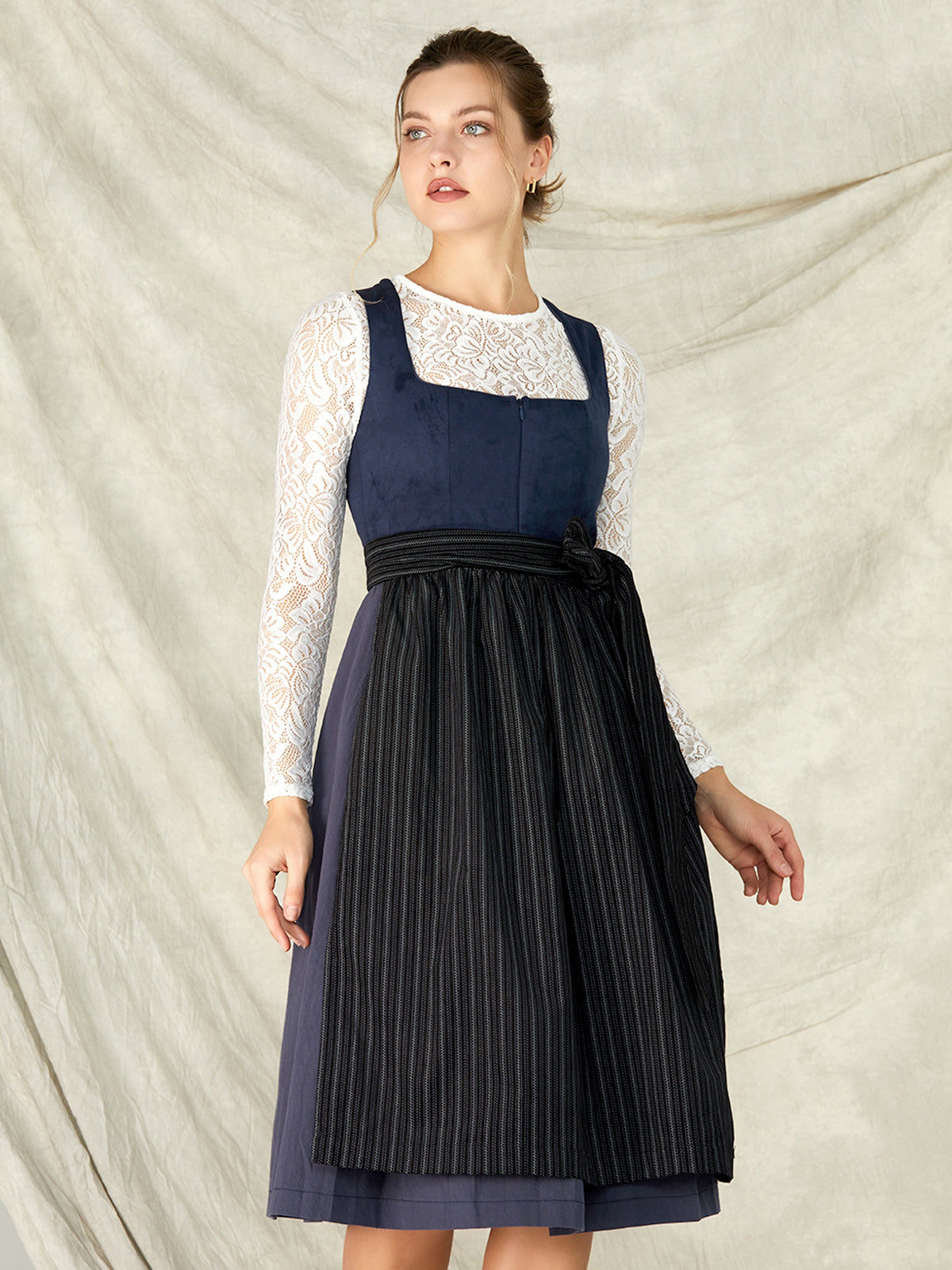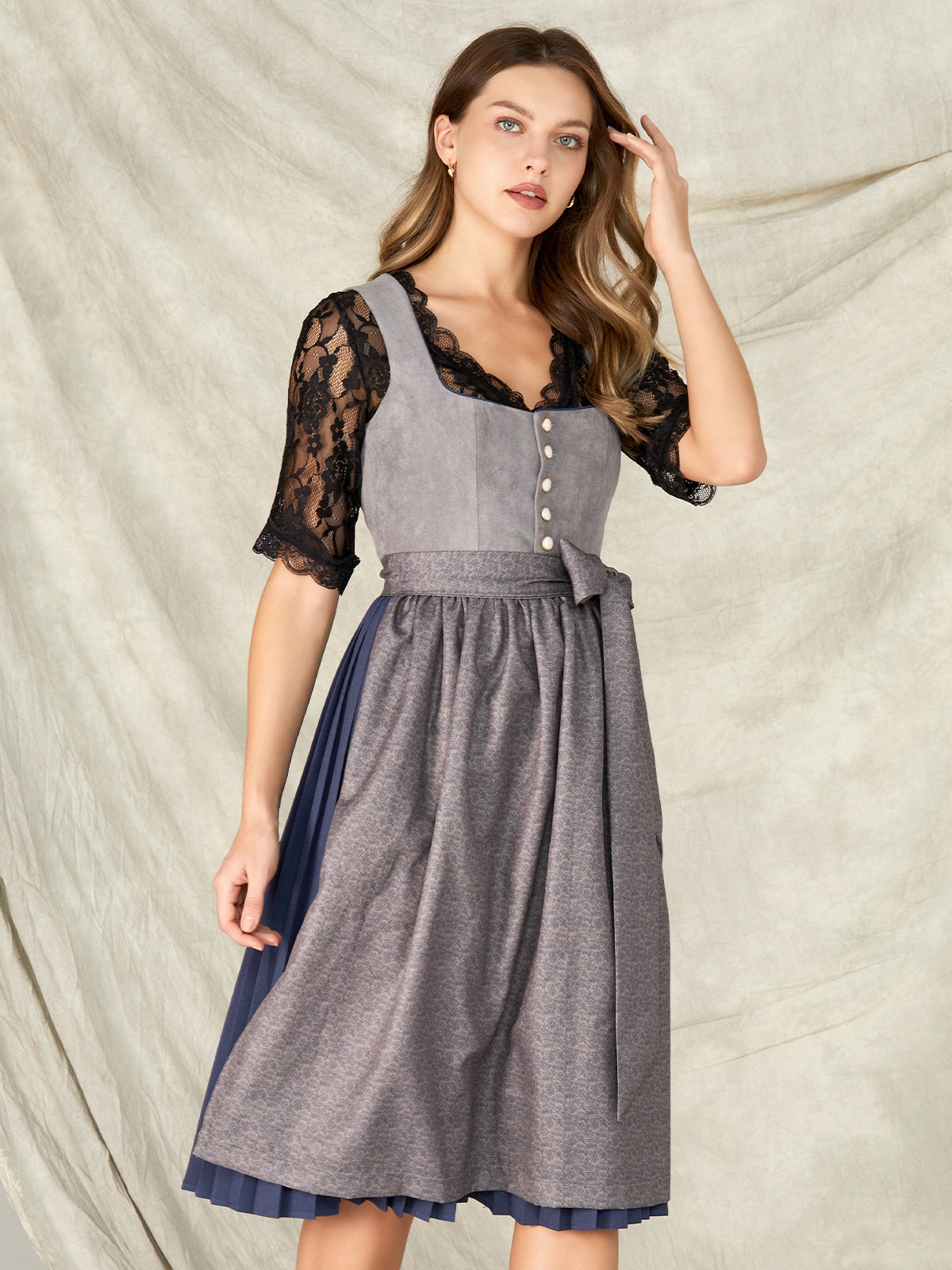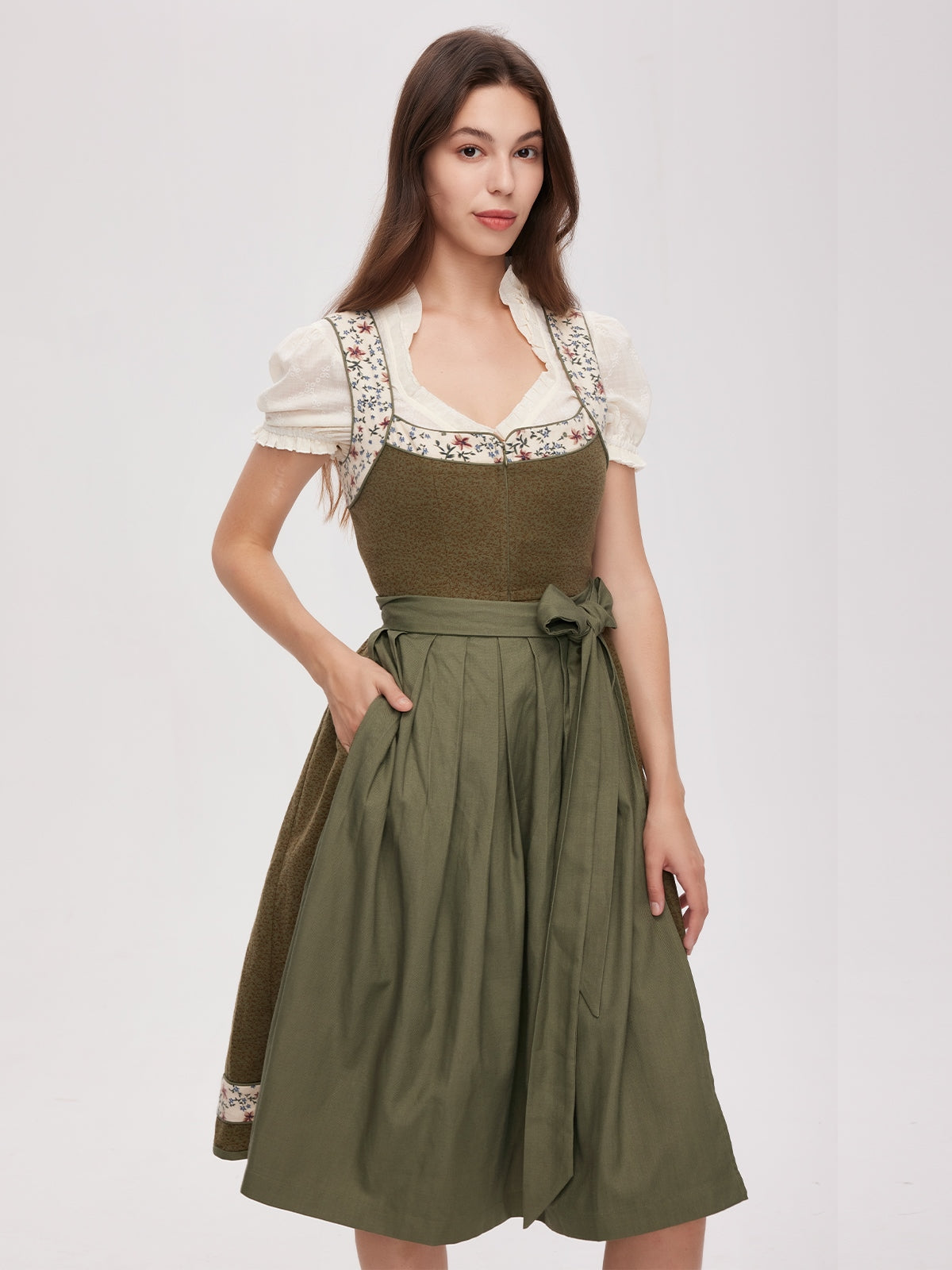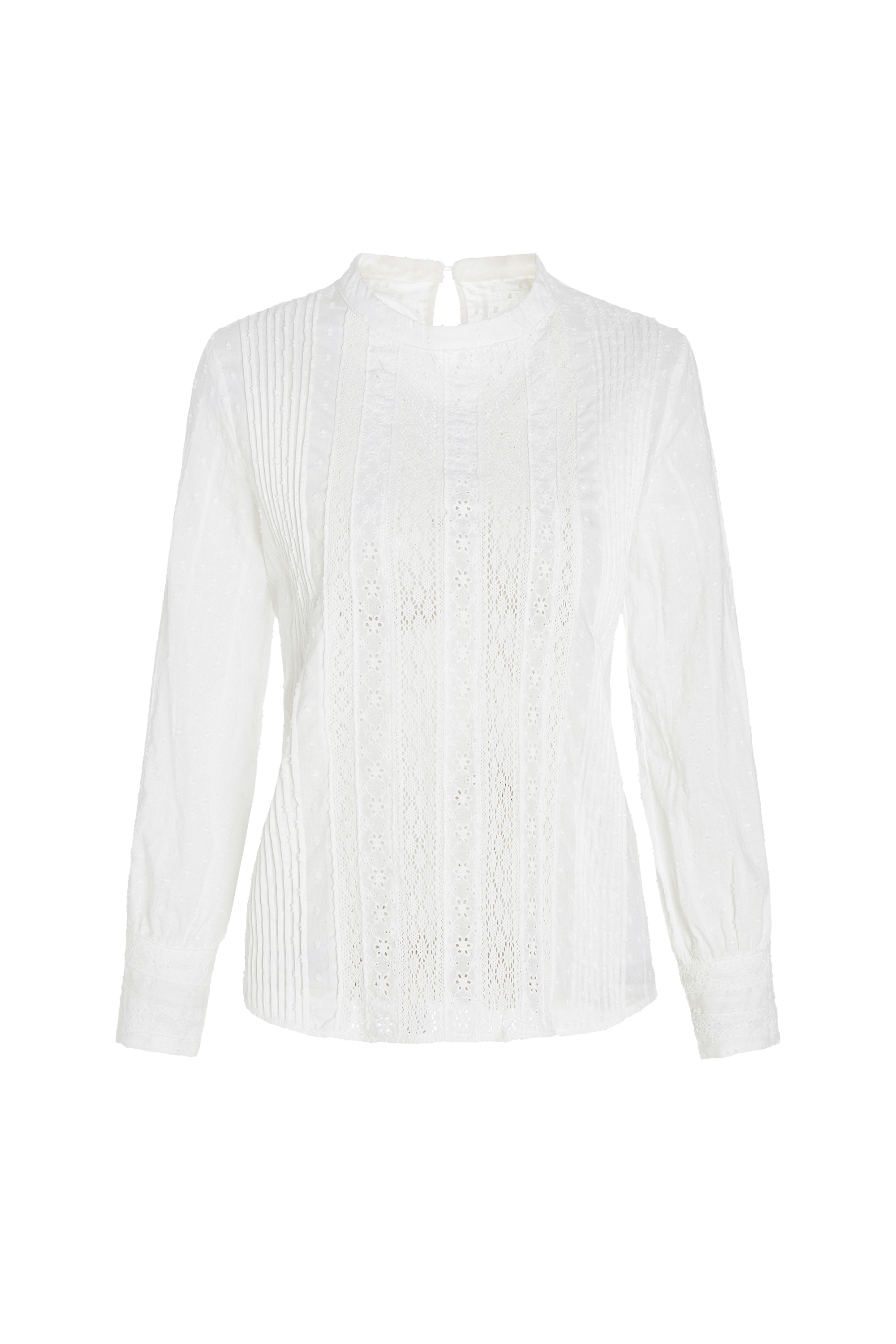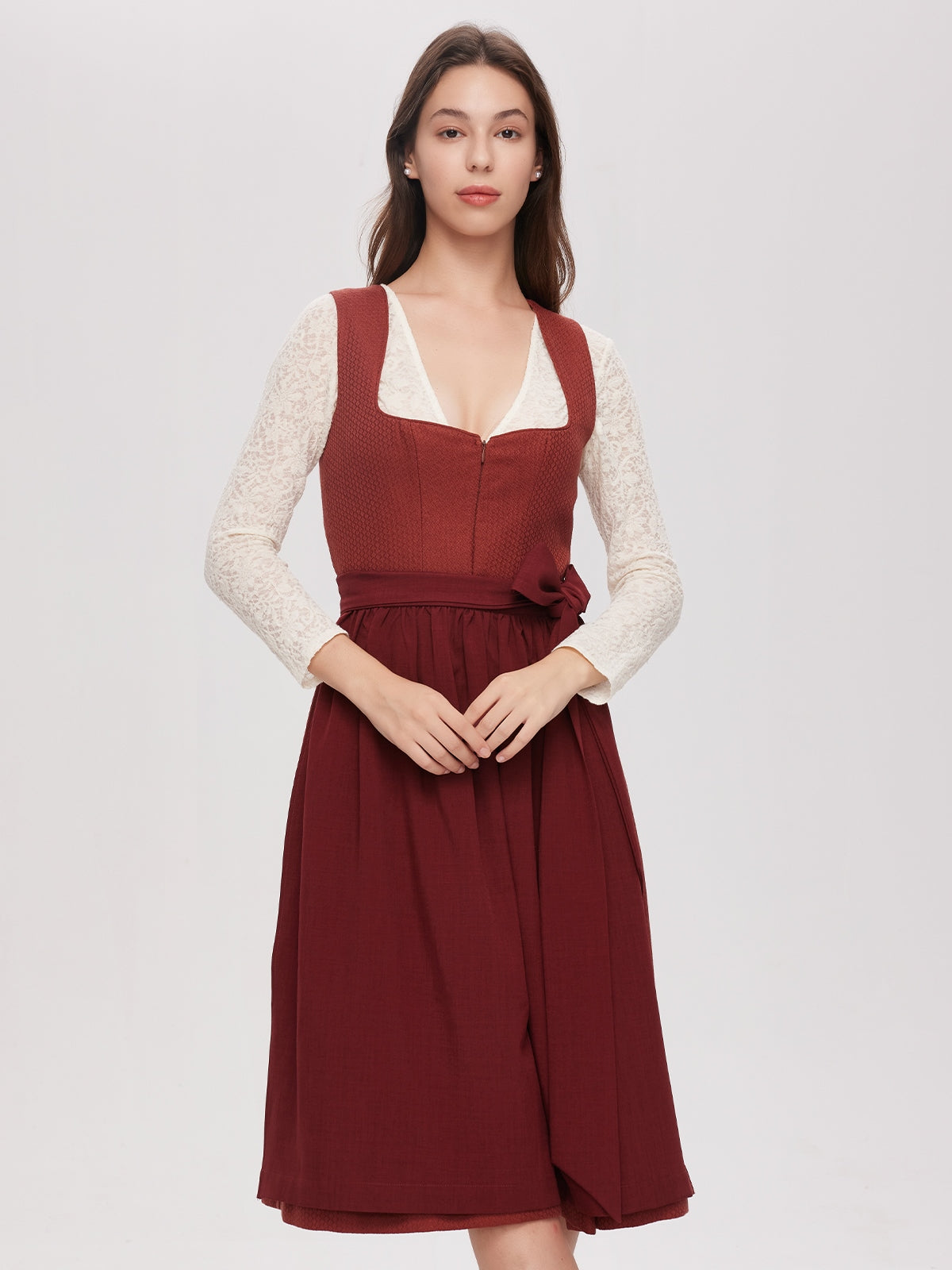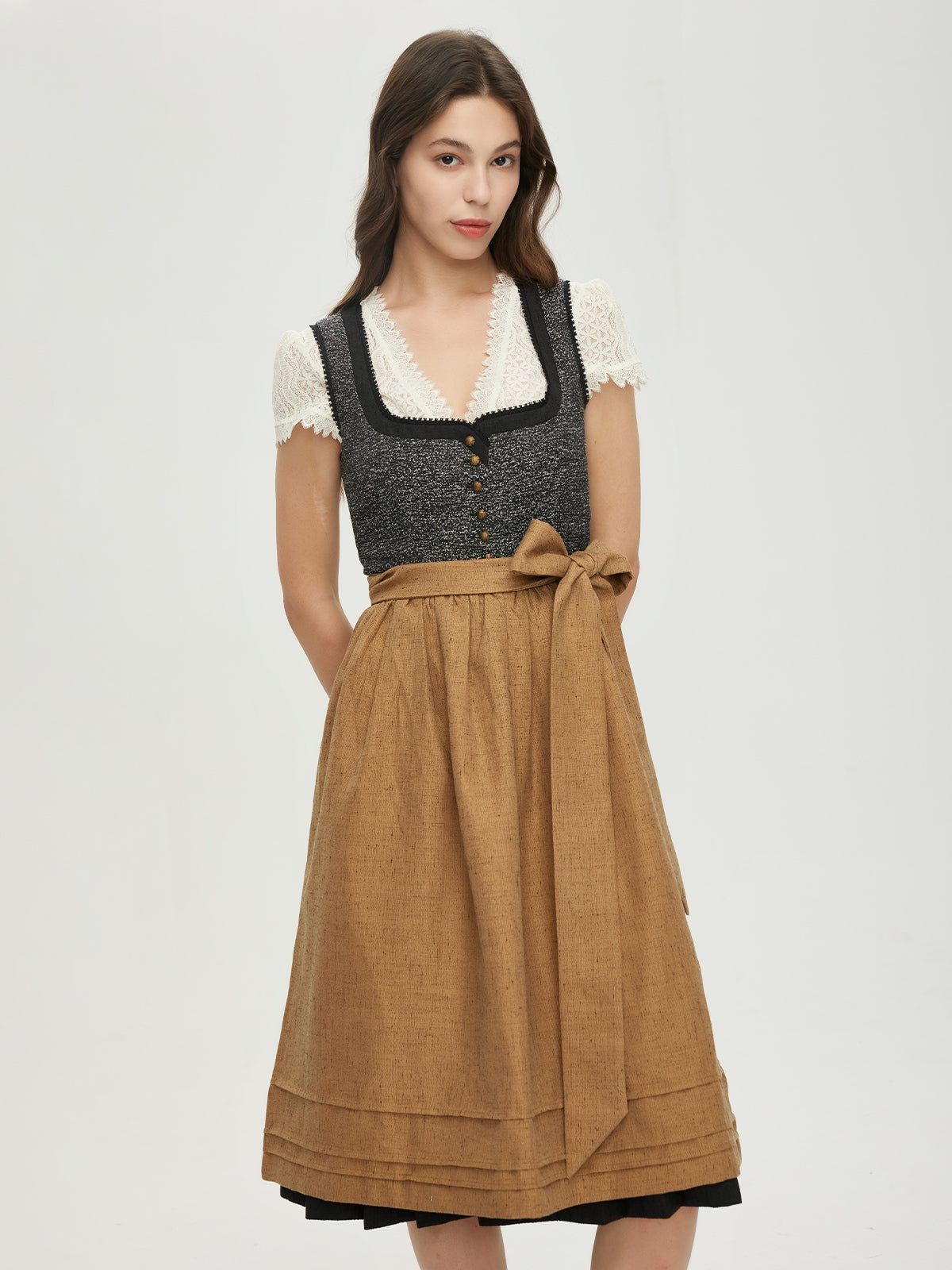I. The dark blue velvet dirndl: A royal blue for everyday queens
The color dark blue is no accident in Bavaria. It reflects the depth of the sky above the Alps, the strength of the Danube, and the permanence of tradition. dirndl dark blue velvet is not a simple garment, but a statement. The velvet, soft as an evening shimmer, flatters the silhouette and lends every movement a touch of mystery.
1.1. Historical roots
As early as the 19th century, women in rural areas wore dark fabrics to withstand the rigors of daily work. Velvet was added later, as traditional dress evolved into formal wear. Its ability to refract light made it ideal for evening events—but today it is also worn during the day, as a symbol of everyday elegance.
1.2. Design details with depth
A high-quality velvet dirndl is characterized by its density. The heavier the fabric, the more elegant its drape. The dark blue color is often broken up by subtle patterns: gold trim, silver buttons, or hand-embroidered vines. The apron, traditionally white or black, deliberately contrasts with the dark dress and draws the eye to the waist—a deliberate play on proportions.
1.3. Modern interpretations
Today, the dark blue velvet dirndl isn't just worn at folk festivals. Designers combine it with leather jackets or statement jewelry and use it in urban contexts. Thus, tradition becomes a bridge between history and modernity.
II. The eyelet lace blouse: magical nothingness
The dirndl blouse with lace is a masterpiece of transparency. Its beauty lies in its reduction: the finest yarns are woven into patterns that reveal more skin than they conceal. Yet this openness is not an act of provocation, but of precision.
2.1. Craftsmanship perfection
Each eyelet lace blouse is unique. The art of eyelet embroidery requires patience and finesse. Master craftsmen in small studios spend weeks conjuring patterns such as flowers, stars, or geometric shapes into the finest fabrics. The result is an interplay of light and shadow that captivates every viewer.
2.2. Symbolism of the patterns
The motifs of openwork lace are no coincidence. An edelweiss symbolizes purity, a diamond symbolizes happiness, a heart symbolizes love. Women choose their patterns consciously to convey messages—or simply because they identify with a particular design.
2.3. Combination art
Under a dark blue velvet dirndl, the openwork lace blouse appears like a sparkling treasure. It draws the eye to the décolleté and hands, while the velvet envelops the lower body in a touch of mystery. A contrast that both deliberately sets the tone and protects.
III. The openwork neckline: A glimpse into the soul of traditional costume
The dirndl blouse with open neckline is the boldest of all designs. A deep, often sweetheart neckline, framed by delicate broderie anglaise, promises a glimpse of skin—yet everything remains hidden. It's an active concealment that reveals more than it reveals.
3.1. The appeal of the hidden
The openwork neckline plays with ideas. It suggests depth without fully revealing it. Just as the Alps hide their peaks in mist until the sun reveals them, the openwork lace blouse remains a mystery. This tension makes it the ideal choice for women who celebrate their femininity without revealing themselves.
3.2. Variations on a theme
The neckline can be round, oval, or heart-shaped. The effect changes depending on the shape: a round neckline appears youthful, a heart-shaped one romantic. The choice of neckline adds a personal touch that makes the garment unique.
3.3. Modern accents
Today, the openwork neckline isn't just used in traditional blouses; evening dresses and even business outfits are also adopting the pattern. It's proof that tradition doesn't have to be a barrier to innovation—in fact, it can be its foundation.
IV. The future of tradition: How dirndl culture is evolving
The attention to detail that is evident in every dirndl dark blue velvet , each dirndl blouse with lace and everyone dirndl blouse with open neckline is more than just craftsmanship. It is a promise for the future. Tradition doesn't thrive on the past, but on the willingness to pass it on.
4.1. Focus on sustainability
More and more traditional costume manufacturers are turning to sustainable materials. Velvet made from organic cotton, blouses made from linen – the future of dirndl fashion lies in environmental responsibility. After all, what good is the most beautiful tradition if the nature that inspired it suffers?
4.2. Digital craftsmanship
Today, lace is not only crafted by hand. Computer-controlled machines make it possible to mass-produce complex patterns without losing the human touch. This preserves the art, even when time is of the essence.
4.3 The global stage
Bavarian traditional costumes are conquering the world. Fashion capitals like Paris and Tokyo are showcasing dirndls on their catwalks. But this internationalization isn't a loss, but rather an opportunity. It's bringing the tradition into new contexts and inspiring people who may have never heard of Bavaria.

